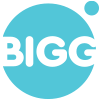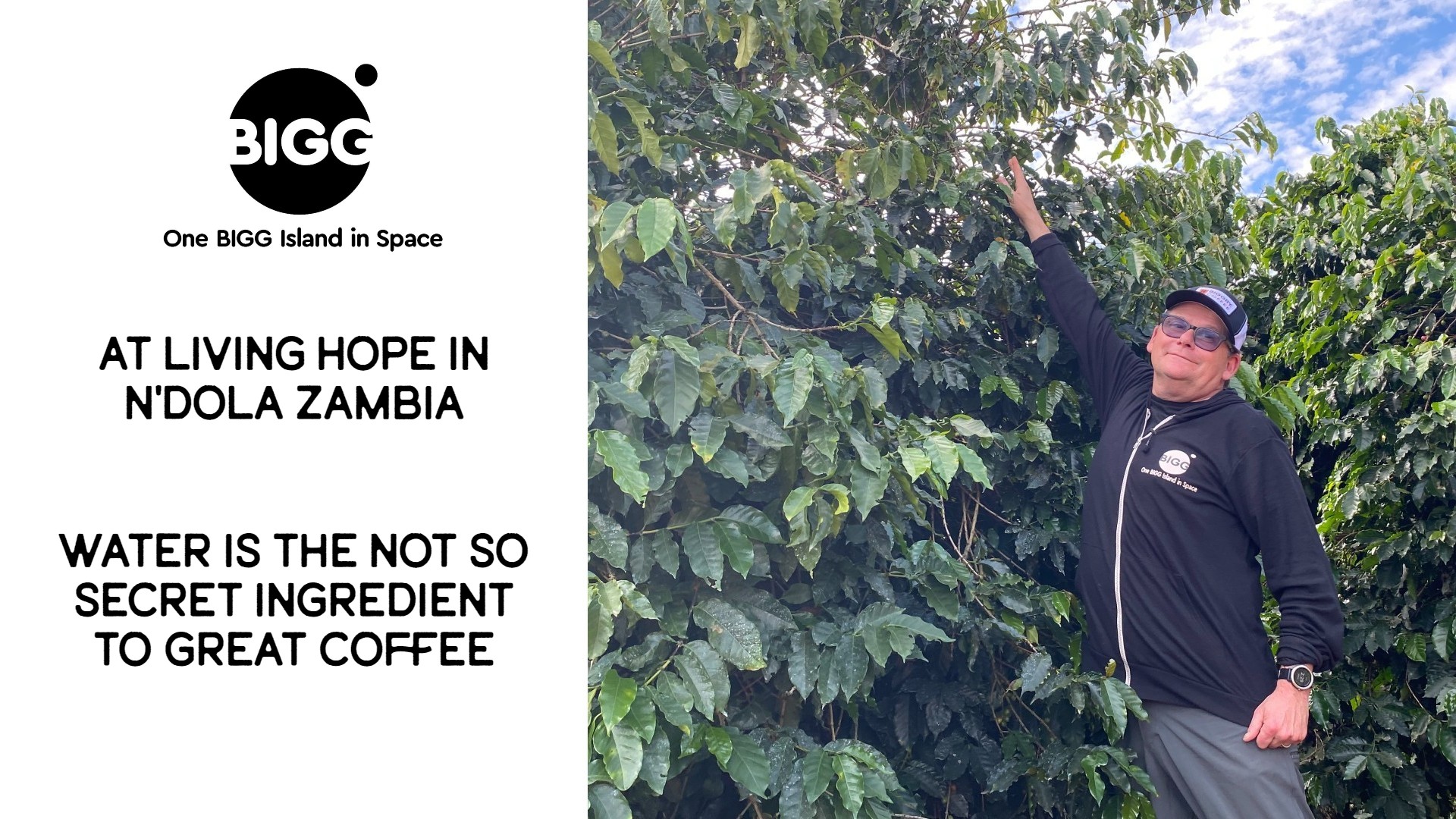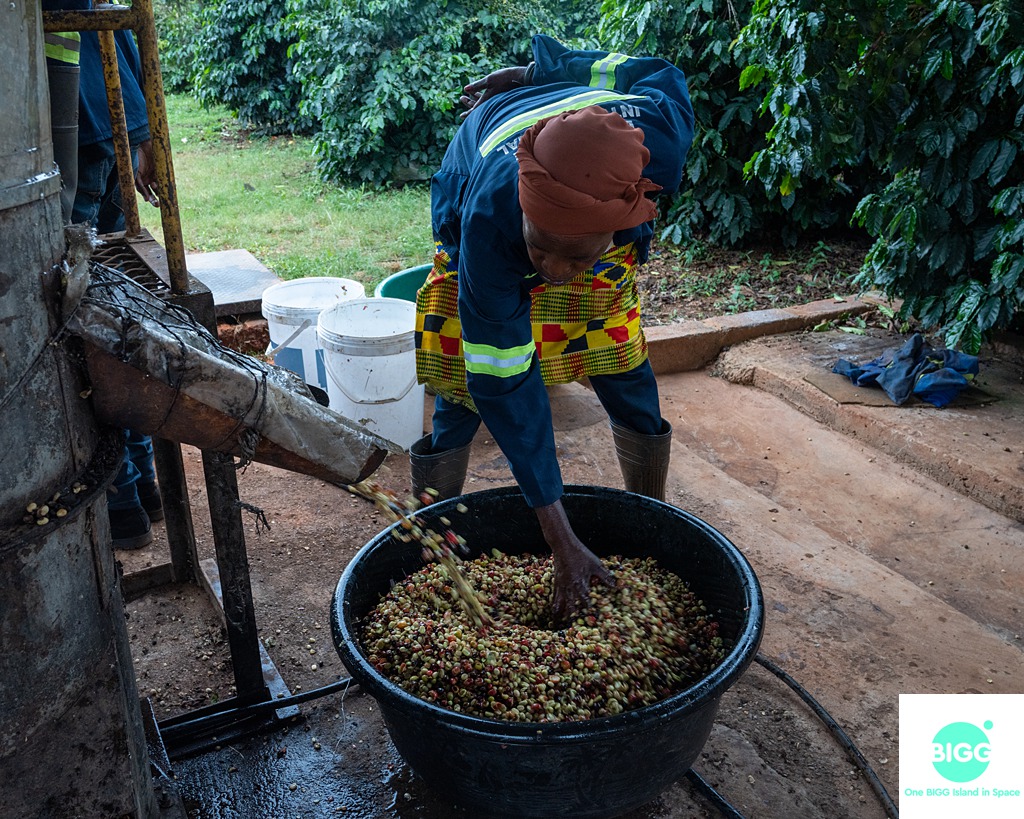By Michelle Fish
Our first visit to the Living Hope International Coffee Farm and Orphanage was in 2018. It was the trip that inspired a movement for BIGGBY NATION that we call Farm-Direct. And it’s the reason we’re spending so much time out in the world searching for coffee producers that are doing the right thing by their people, the planet, and their communities.
The idea is simple. If we cut out the middlemen and buy direct from growers at a fair price, we can help those farmers be economically sustainable. And then they can get on with changing the world, knowing that we’ll be right beside them every step of the way.
It is a BIGG idea. And it was born when we discovered an orphanage that had started a coffee farm to make itself more sustainable.
Living Hope looks a lot different than many of the other coffee farms that we visit. For one thing, although it is at elevation (around 1,500 meters), it’s not on the side of a mountain. It’s a high plateau, with rich, red volcanic soil. When it’s wet there during the rainy season, it is very, very wet. And when it’s dry, it may not rain for a month. So, unlike most of the coffee farms in Central and South America, they need to irrigate the coffee for it to thrive.
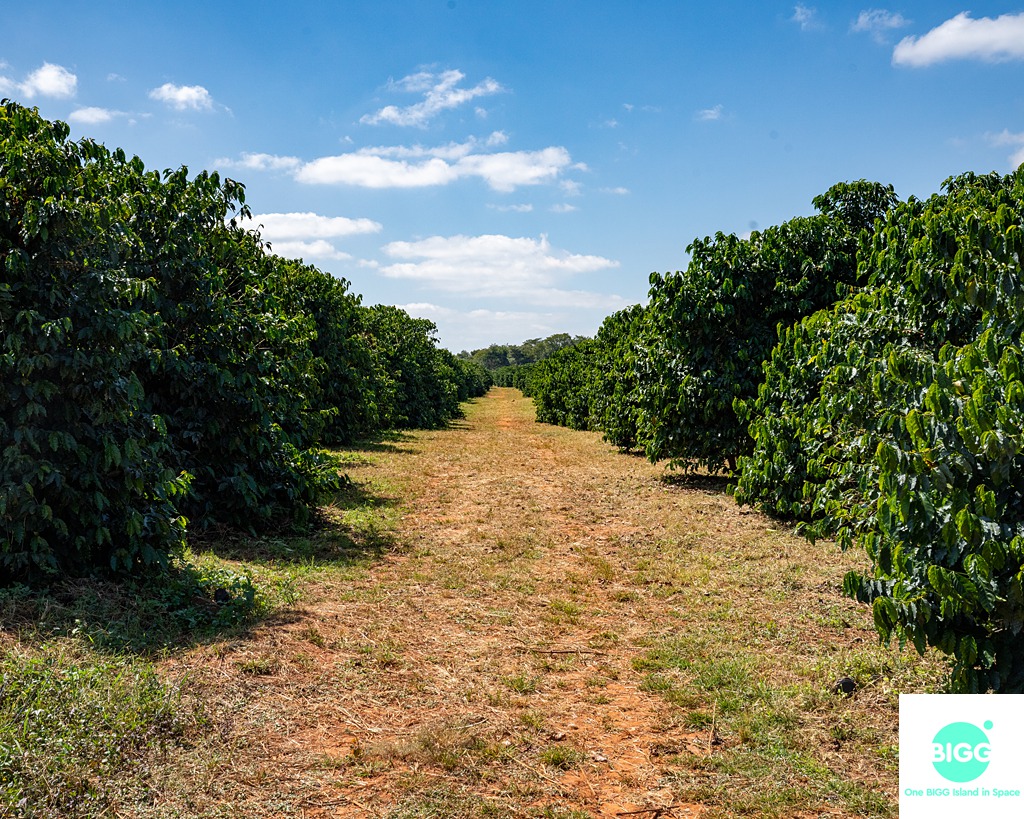
Another difference, of course, is that most coffee farms are started by farmers who already have a deep knowledge of growing coffee. At Living Hope, they had to figure it out from scratch, relying on the help and advice of other growers and local experts.
By the time we met them in 2018, they had been growing (delicious) coffee for several years and were learning more all the time about changes they needed to make in their farming practices, like adding more shade trees, and increasing the amount of space between the plants.
We were excited to check out the progress.
Wana Chipoya
The first, and perhaps biggest advancement at Living Hope is that this coffee farm now has a coffee farmer.
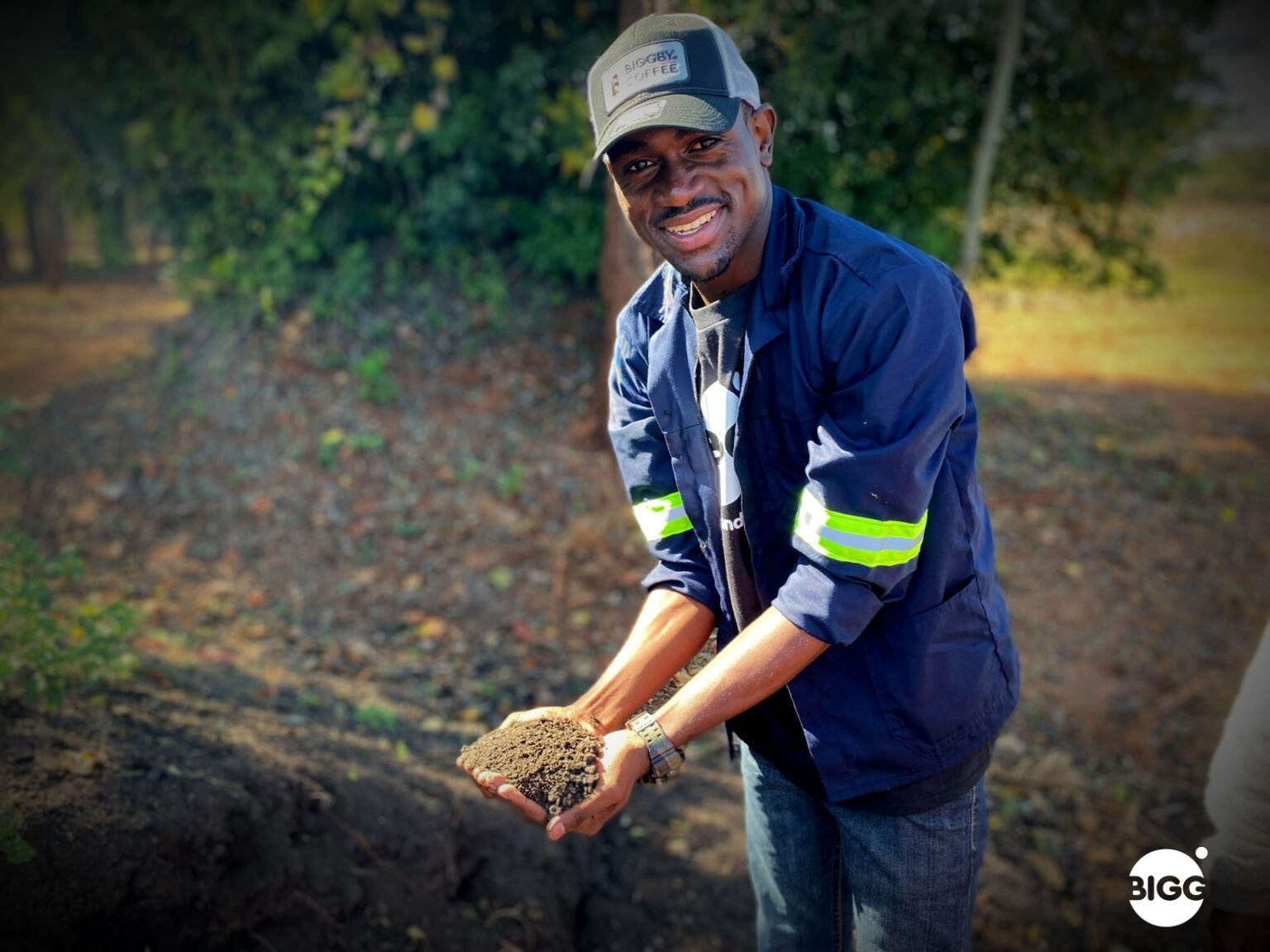
Wana Chipoya is the son of Living Hope’s Executive Director, Davies Chipoya. He was on track to fulfilling his dream for himself of becoming an engineer when he was approached by his father, and Lee Davies and Kim Cooke, part of Living Hope’s US-based leadership team. The farm needed a farmer, they told him. And they asked if he would consider taking on the challenge.
Wana is a young man of deep convictions and high moral standards, and he had grown up helping in his family’s ministry. He believes strongly in the work that Living Hope is doing for the children at the orphanage. And he sees the tremendous impact the coffee farm has on creating economic opportunity for their neighbors. So, he said yes, and he switched his degree to Agricultural Science.
But it’s not just about doing his duty. He liked the idea of coffee farming, and he had an appreciation for the science of it. But when Living Hope sent him to Peru to intern at a Shared-X coffee farm for a month to learn the basics (more about them later), he had a revelation. He fell in love with it, from root to stem to bean.
When you meet Wana, the first thing that strikes you is his enthusiasm for all things coffee. And just as importantly, for what coffee can do for the people in N’dola. His vision, he told us, is to get as a high a yield of quality coffee as the farm can produce each harvest so that the profits can sustain the ministry and the farm itself. “I am here to glorify God and to help the people and the orphans,” he said. “When your work can help the vulnerable, that’s how God blesses you.”
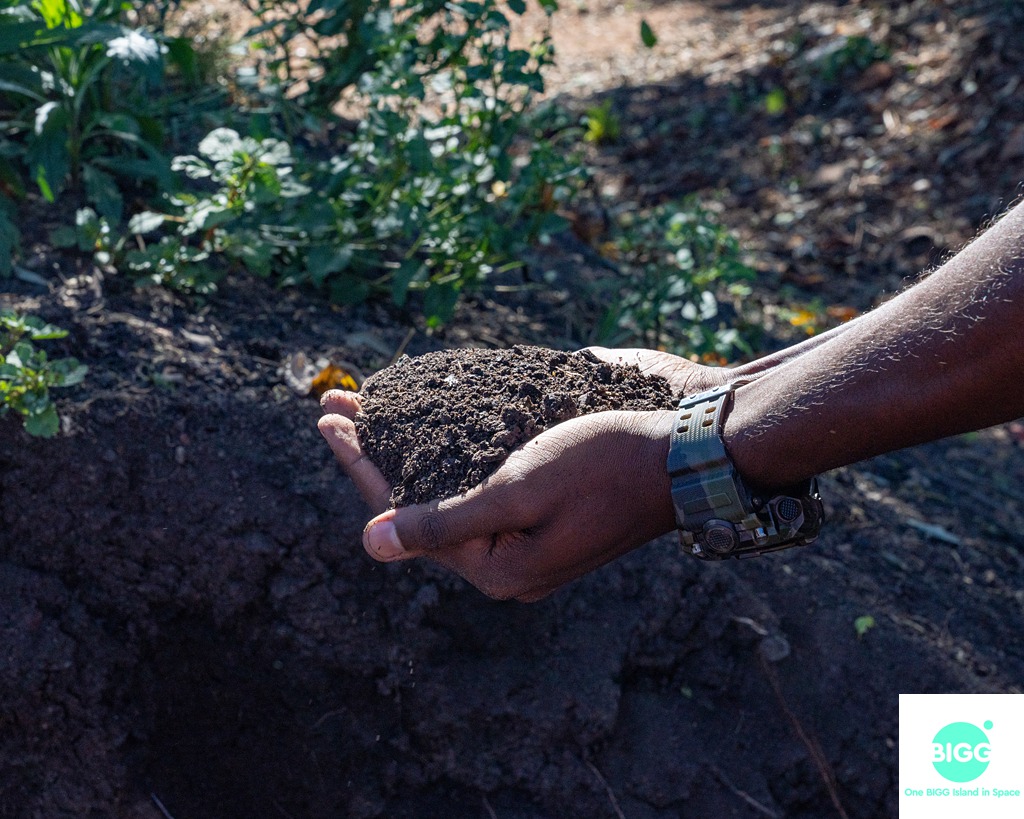
Composting
One of the first big tasks that the farm and Wana took on was to develop a composting program for the farm that uses the plant material left behind when you process coffee. Working the compost into the soil around the coffee bushes helps to provide nutrients for the next crop. In the process, he’s helping to make the farm more sustainable and improving the soil. You can learn more about their four-stage process in the following video that we shot on the farm:
Seedling Farm
He has also helped to expand the seedling farm. In the middle of the harvest, coffee cherries from the most productive trees are collected to be used as seeds to grow the next round of coffee bushes. It takes about seven months for the coffee seed to grow into a plant large enough to be transplanted out into the fields. And then another year, or so, for it to become fully productive.
They now have 4,000 seedlings growing in the nursery to support their plan to keep annual yields high. Their goal is to replace their coffee bushes every five years to maximize their yield.

Partnership with Shared-X
Shared-X is an agribusiness startup based in Lima, Peru that provides coaching and training in advanced agricultural techniques in order substantially increase yields for small farmers. In the process, they are helping small farms become more sustainable.
Two years ago, they provided 3,500 seedlings of several different varieties to Living Hope. At their direction and using the methods Wana learned during his internship with them in Peru, Living Hope has planted a new 1.5 hectare plantation. The coffee bushes in this field were planted farther apart from each other than in the original fields, allowing for better airflow.
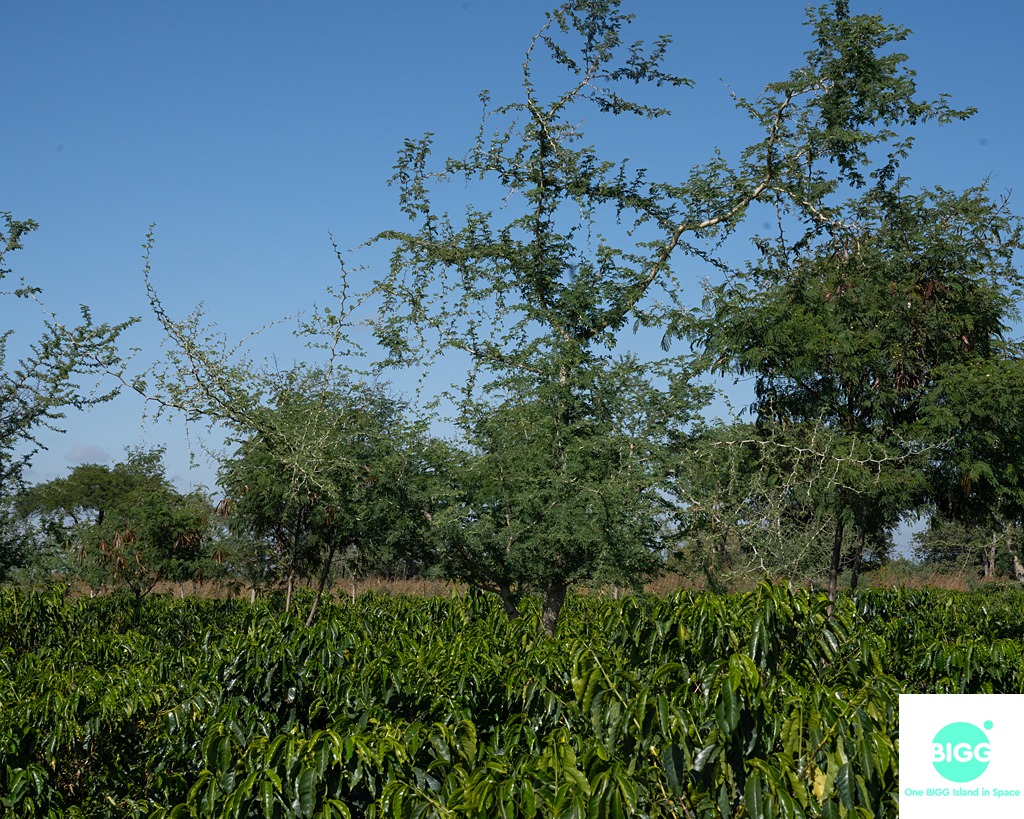
Young Musangu trees beginning to provide shade in the new Shared-X plantation at Living Hope.
And they’ve incorporated shade by adding a native tree called the Musangu. It has several advantages in that it is as a nitrogen fixing tree, meaning that it is able to pull nitrogen from the atmosphere and add it back into the soil. Nitrogen promotes vegetative growth in the plants.
The Musangu tree also loses it’s leaves in the rainy season, just as the coffee bushes produce their flowers and set their fruit. The added light on the plants during that time helps speed that process up. And by the time the sun is back out, the trees leaf out to give the coffee some much needed shade. Shade slows the ripening process of the coffee cherry, which allows it to develop a better flavor. And it also helps the plants preserve water.
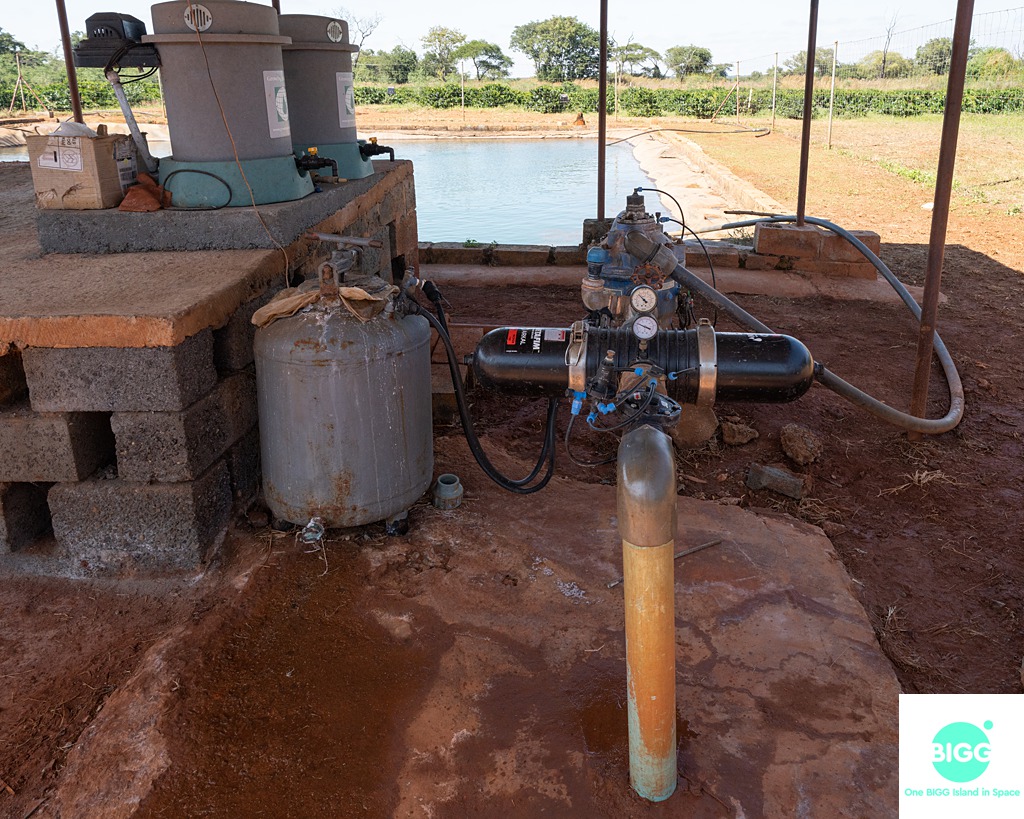
Irrigation
Speaking of water, the irrigation system is much further along than we first saw it. Given the seasonality of their access to rainfall, the coffee plantation has to be irrigated during the dry season, which is almost eight months long. Each coffee plant needs 12 liters of water per day.
To accomplish this, six bored wells, each between 60-100 meters, pump water into a large reservoir that they dug out. When we last visited them, one of their biggest challenges was their access to power.
Although there is electricity on the farm, it is often not reliable, and may go out for hours or days at a time. Clearly, that’s a problem when your coffee crop is fully reliant on keeping the water flowing. They have a generator but it, too, is not reliable. It breaks down often, and it is difficult to find the parts or the qualified service technicians to keep it running.
But two weeks before we arrived, they installed a solar power station that can ensure that the electricity to the pumps keeps flowing, as well as serving as back-up power for the orphanage.
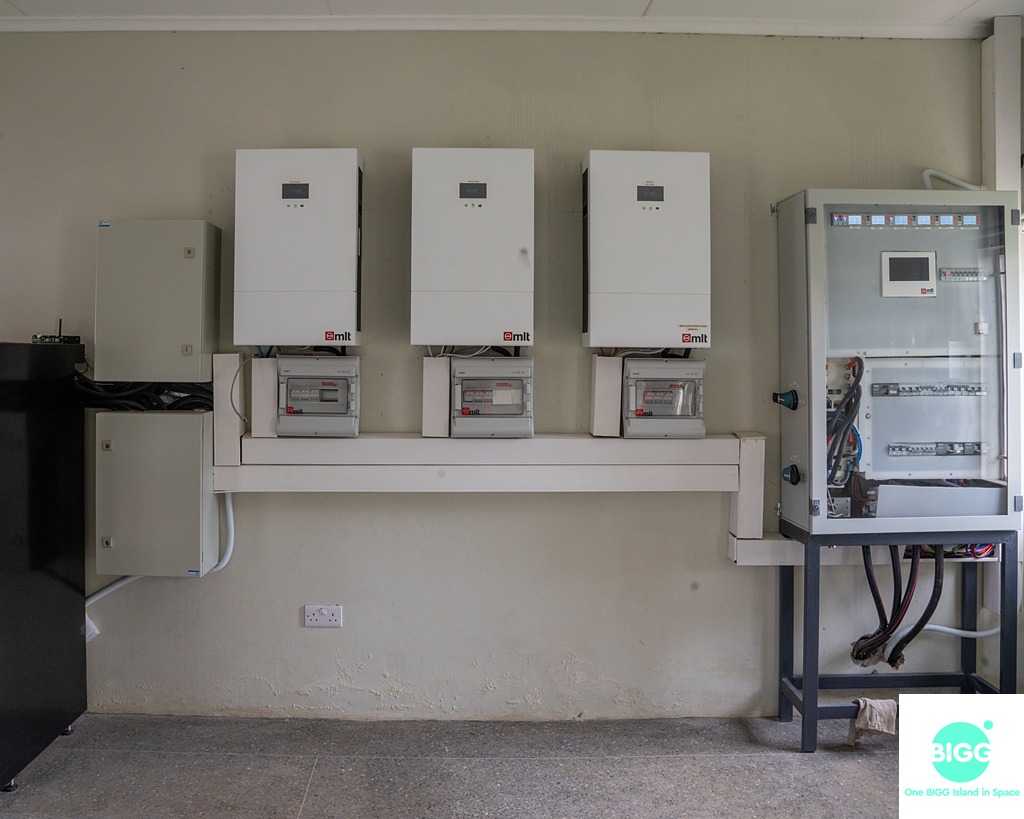
You can learn more about their irrigation process here:
Feeding the Children
Coffee is not the only thing they are growing at Living Hope. Since our last visit, they have established a garden that provides fresh produce, like cabbage, corn, eggplants, ramps, and tomatoes all year long. The addition of chickens has multiple benefits. Their manure is used in composting, and they have access to the eggs.
But that’s not the only part of the coffee farm that’s providing protein for the orphanage. Through a happy accident, fish ended up in the irrigation reservoir. Every year they empty the reservoir and clean it. Then they harvest a portion of the fish for food.
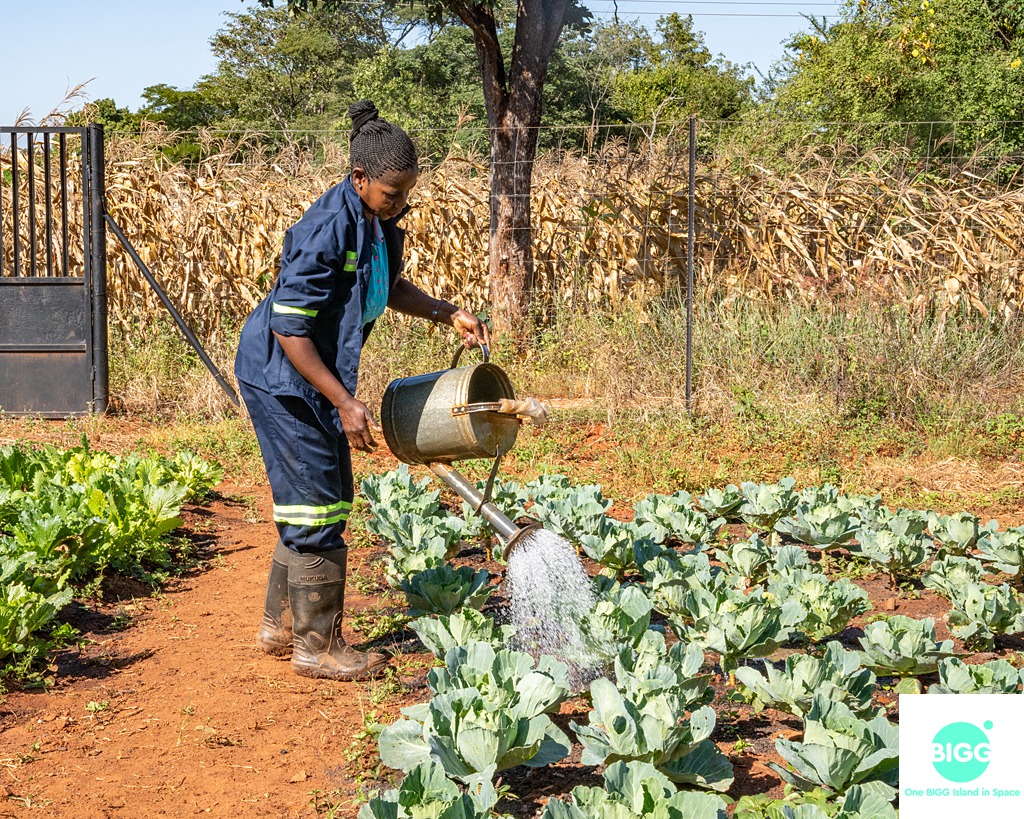
The Workers
There are about 20 permanent workers on the coffee farm, including one electrician and a plumber. Some, like Amos Mulenga, the Farm Supervisor also known as Uncle Mule, have been there since the beginning. He was the farm’s first general worker, and has since risen through the ranks. Now, he is responsible for ensuring that the farm’s plans get implemented in the fields.
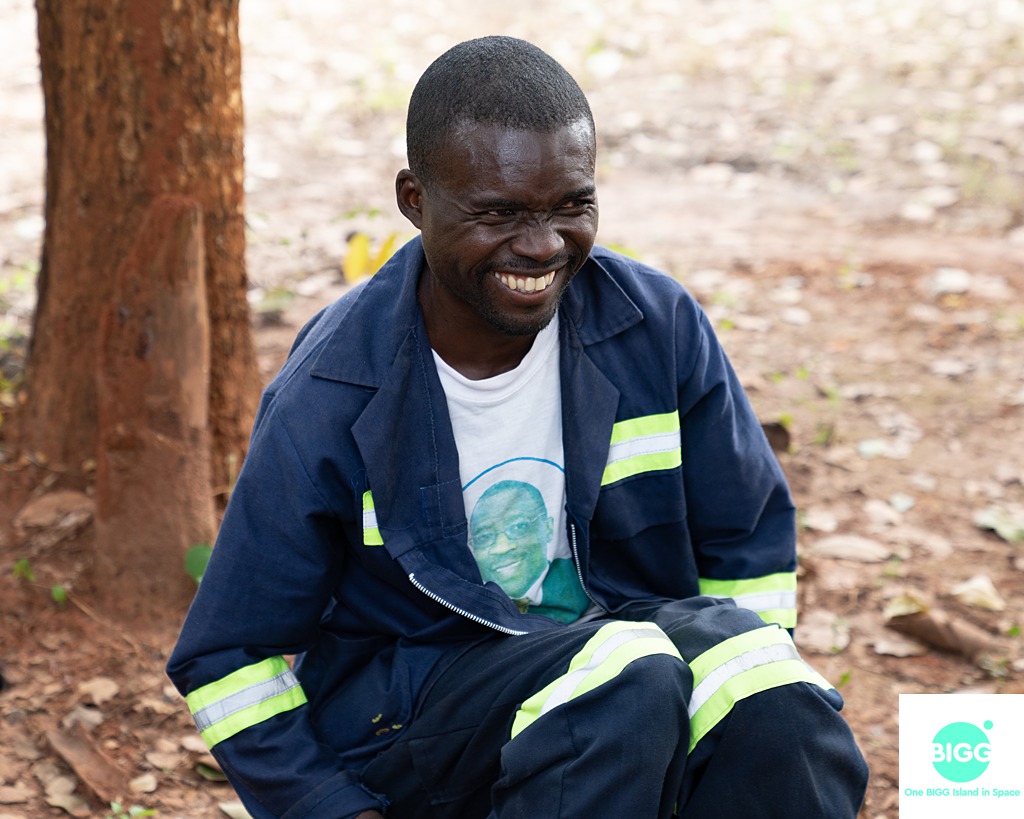
Amos Mulenga
We met a few of the coffee pickers while we were there, including Febbie Nkonde. She, too, has been with the farm from the start, and she is one of their fastest pickers. She uses the additional income from her seasonal work with Living Hope to supplement the income she gets from her own farm. If you’ve enjoyed Living Hope Ubumi from BIGGBY COFFEE, it’s possible that Febbie picked the cherries that went in your cup!
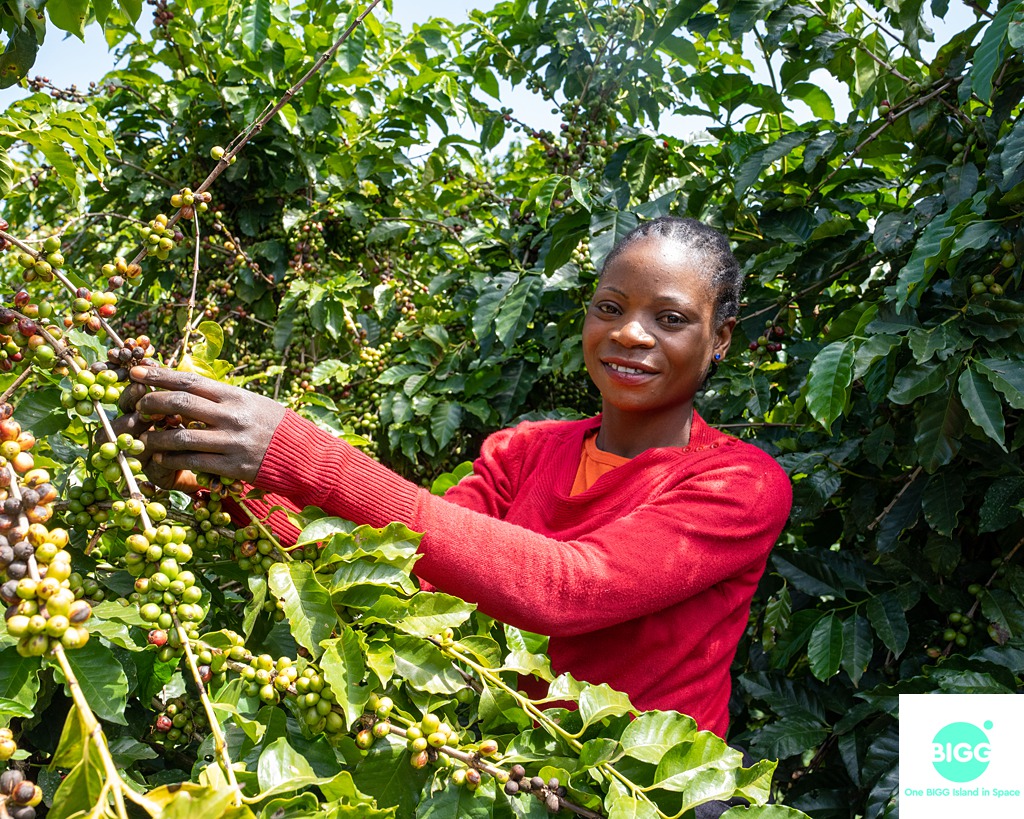
Febbie Nkonde
The typical day starts at 8 am Monday through Saturday, which is a half-day. They break for lunch around 1:00 pm. It is prepared for them by Alice Matipula, who is also responsible for stirring the coffee on the drying beds.
Lunch includes cooked vegetables and a protein, as well as portion of Nshima, which is practically the national dish of Zambia. Thick and porridge-like, it is made from finely ground corn meal that is about the consistency of play dough. You massage pats of Nshima with your hand and use it to scoop up the rest of your meal.
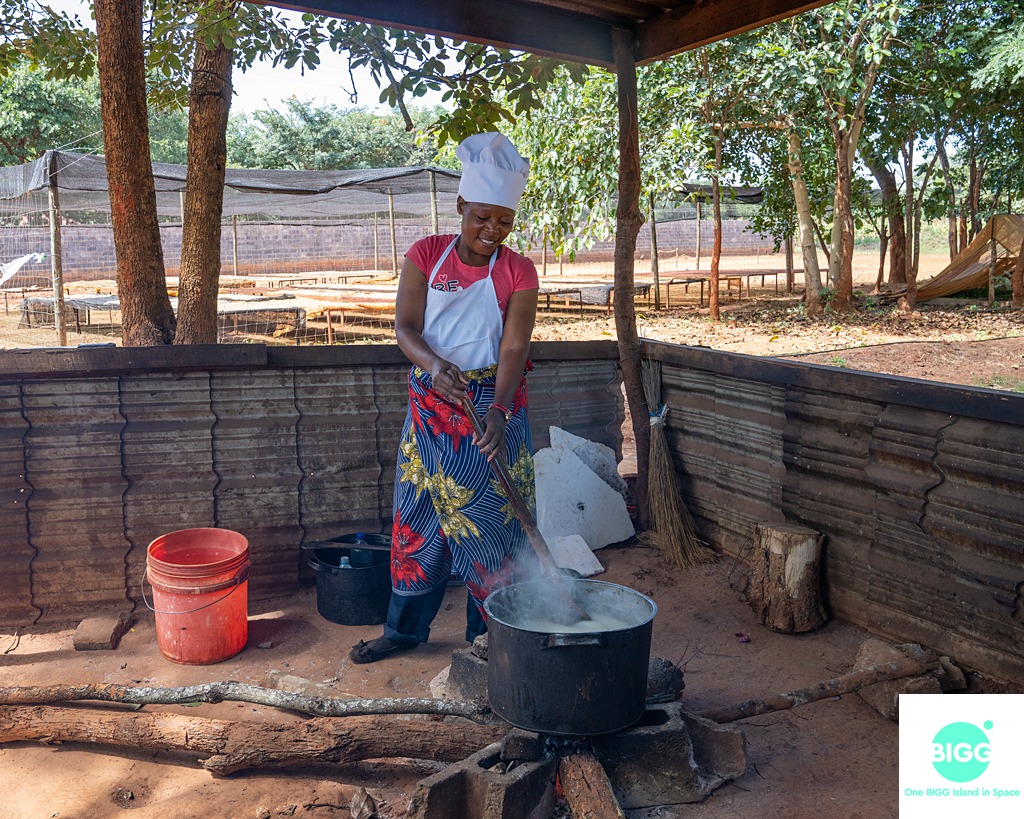
Alice Matipula
While we were there, we saw the progress on the new facilities being added for the workers. They are building a dining hall, changing rooms and showers. As it is now, the workers gather outside on tree stumps and logs to share their meals. They are looking forward to having an indoor dining facility, and the ability to shower off, particularly those that work with the fertilizer and the compost.
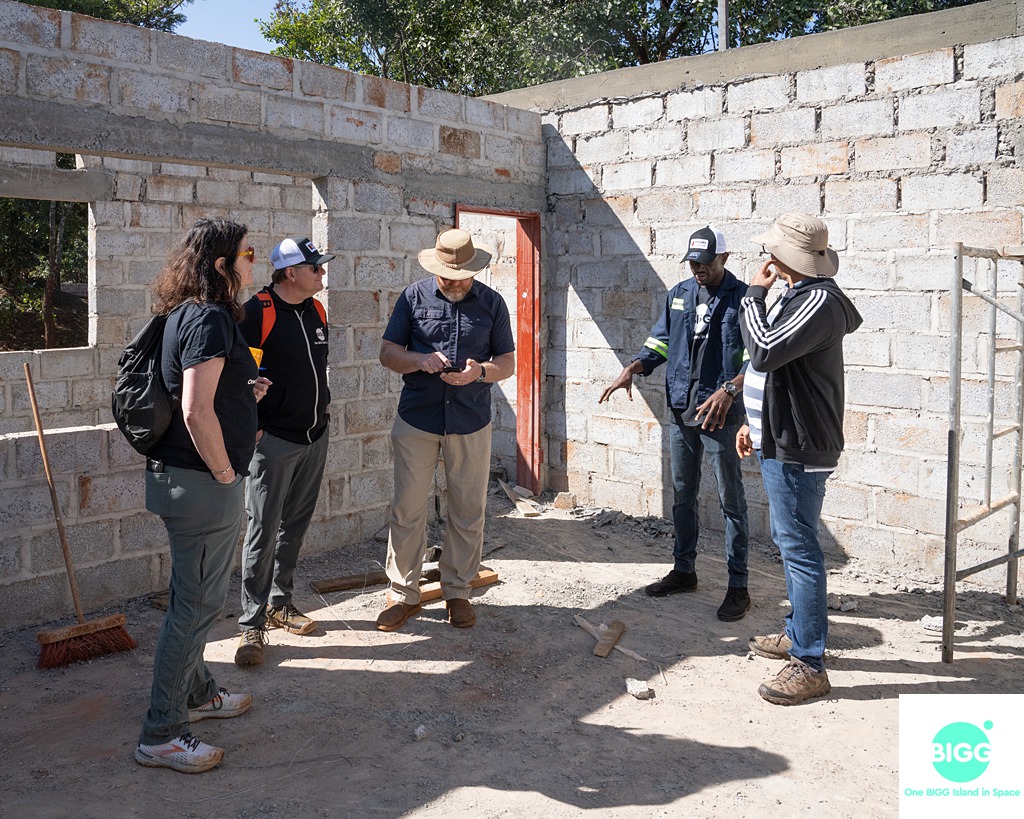
New Wet Mill and Coffee Storage
The farm is constructing facilities to house a new wet mill which will greatly increase their capacity to process their coffee. Their current wet mill is one of the most rudimentary that we have seen at a coffee farm. It is a real pinch point in terms of making sure they can de-pulp the cherries in a timely fashion. You can see what it looks like now here:
They plan to complete construction by the end of the year. The hope is that it will allow them to process three to four times faster than they can currently.
They have also added air vents to provide better circulation in the room where they store their green coffee. From here it goes to Lusaka, the capital city, for the dry-mill processing and export.
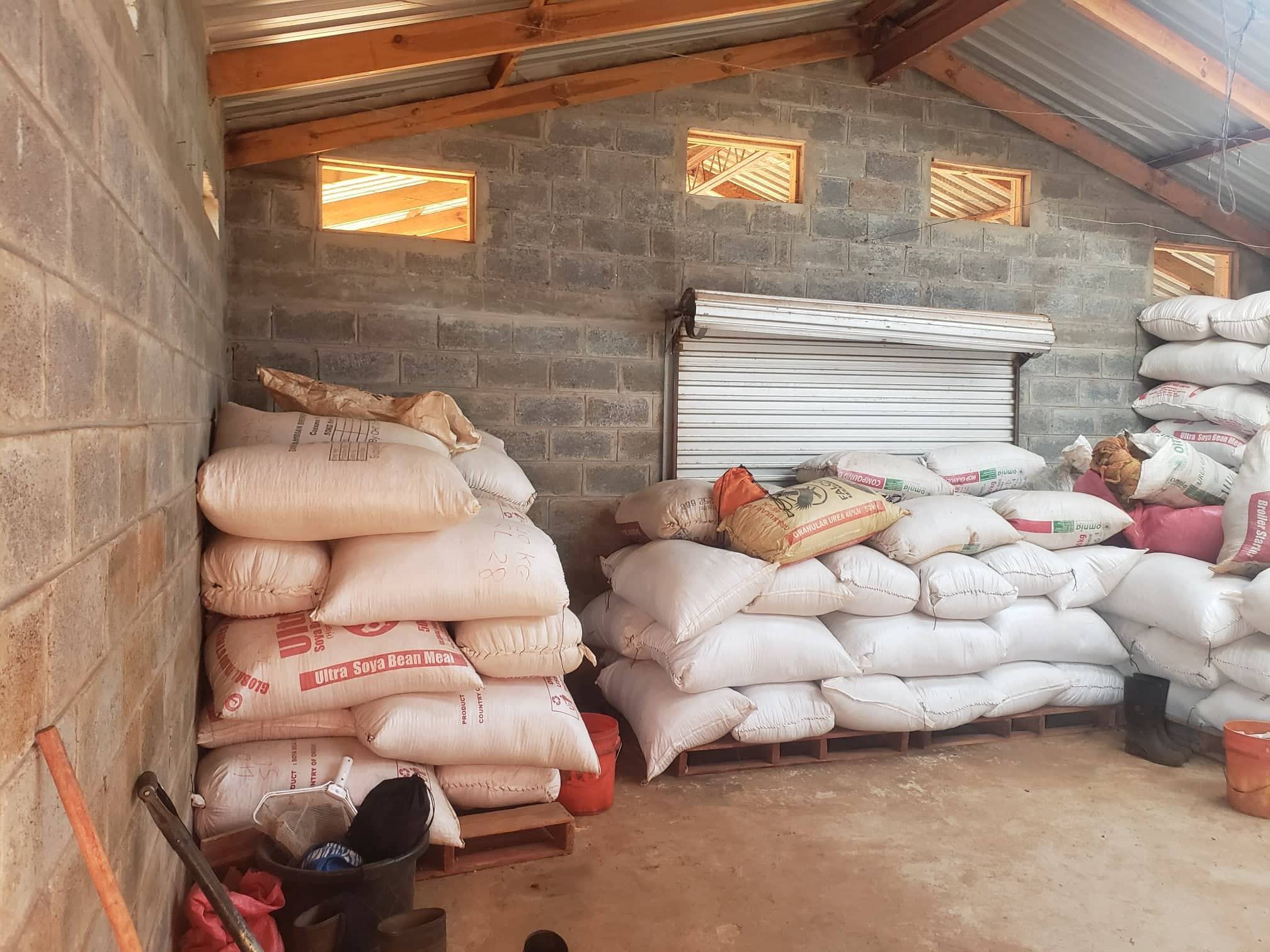
Future Plans
One of the most immediate challenges at hand is to decide how and when they will prune the coffee bushes. The plants in their mature fields are currently way too tall for efficient harvesting. As you can see in the picture below, the pickers have to stand on a barrel to reach the tallest branches.
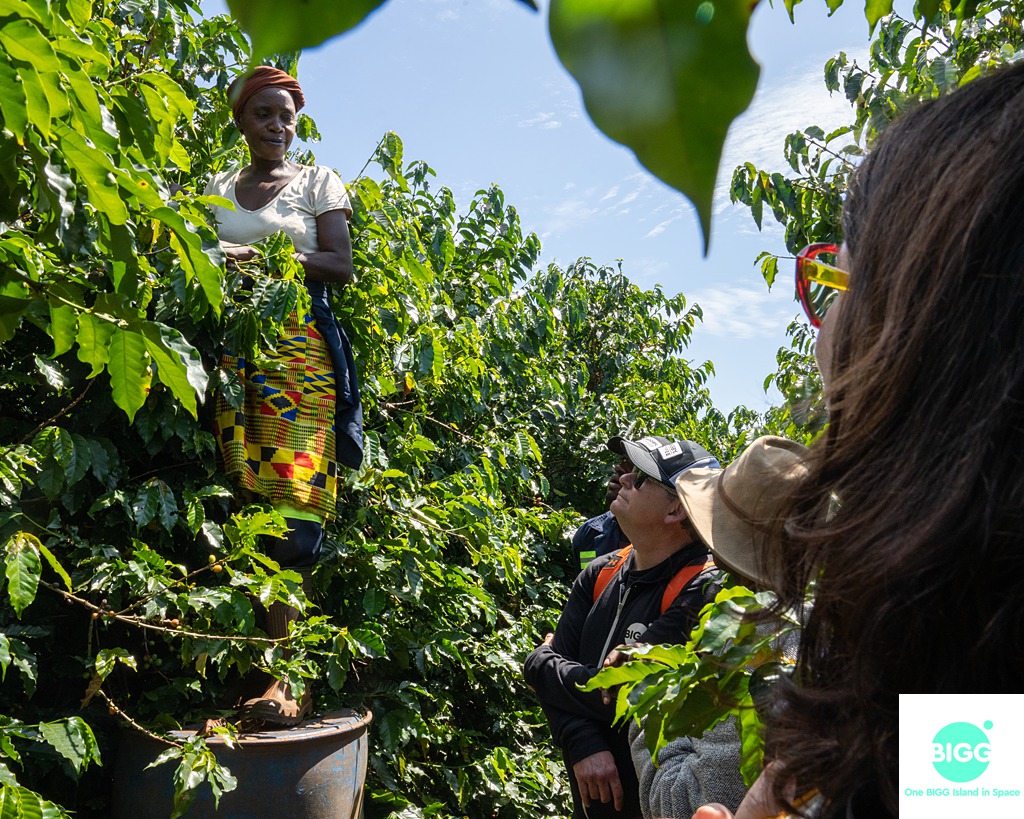
Typically, coffee is only allowed to grow to human height… maybe, 6 ft or so. Pruning is a highly skilled task, and there are many different theories on which way works best for the results any given farmer is looking for.
In addition to what Wana has learned about pruning from the partnership with Shared-X, the plan is for him to travel to our Farm-Direct partner, the El Recreo Coffee Estate in Jinotega, Nicaragua. There, he will spend a few weeks on the farm with Jorge Ferrey Machado. Although the growing conditions are completely different in Nicaragua, Wana will have the opportunity to experience some different pruning techniques and see their results.
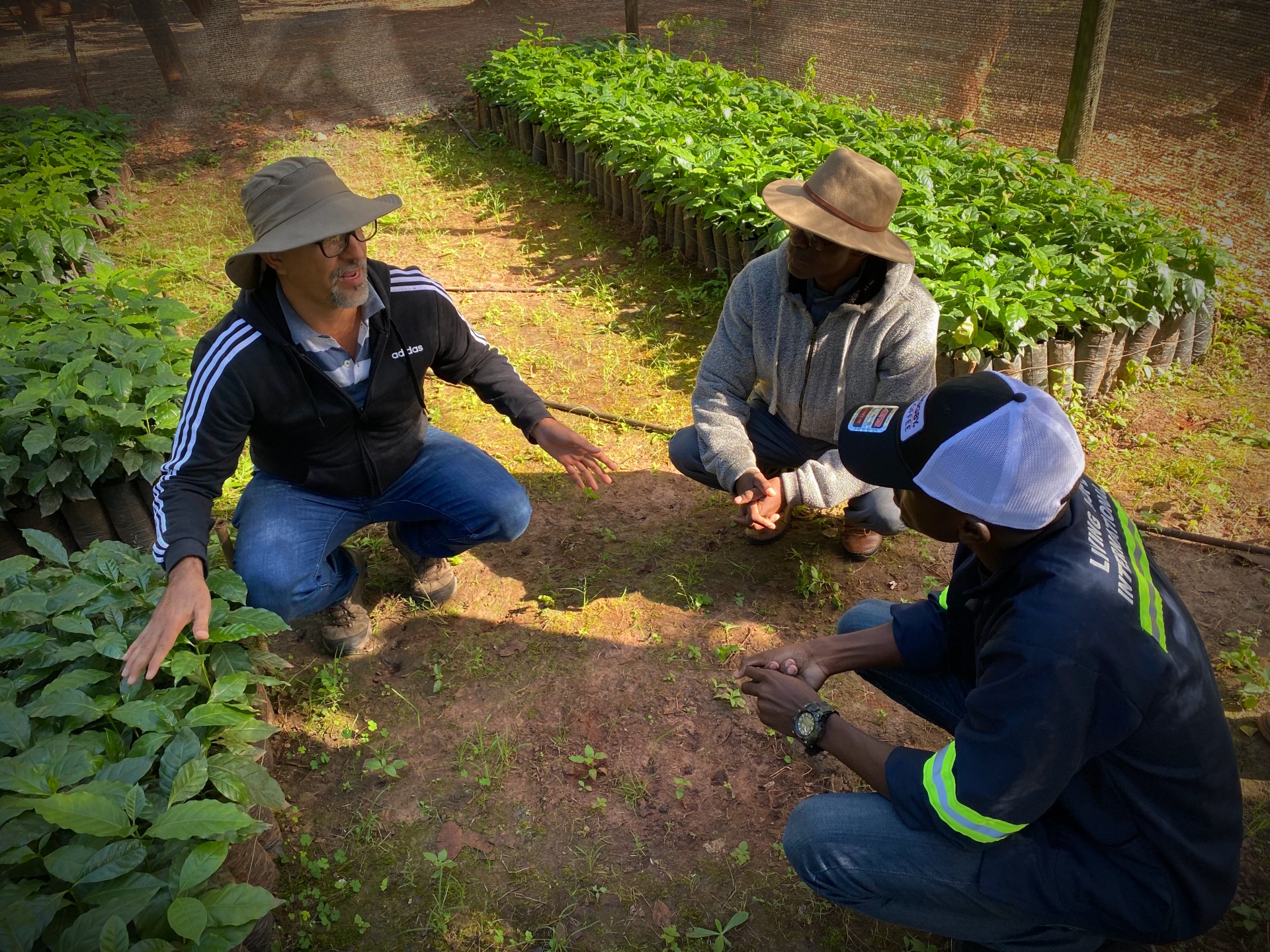
Jorge Ferrey Machado (left) accompanied us on our trip to Living Hope. Here he is talking about seedling production with Davies Chipoya (center) and Wana Chipoya (left).
Another challenge includes getting a real handle on what it costs for them to produce a pound of coffee, taking into consideration all of the variables that influence the outcome. Not having a full understanding of the cost of goods sold is a common problem among small producers. Obviously, it has a direct impact on their profit margin and their ability to be sustainable.
At the technical school for farmers that is run by the Ferrey family at El Recreo, Jorge (with his Masters Degree in Finance) teaches a class on just that. We’re looking forward to Jorge and Wana collaborating on that project. The goal is to maximize the contribution that the farm can make to the operating budget of the orphanage.
Expanding The Coffee Farm
As BIGGBY COFFEE continues to grow, so too does its need for a coffee. Currently, there are 300 stores open in the United States, with 150 more to come in the next 24 months. So, the 2,000,000 lbs of coffee that we buy today will need to grow accordingly.
We are in constant dialogue with our partners about our hope and desire for them to grow with us. At Living Hope, one strategy they are pursuing is to lease land from their neighbors. Living Hope would make the necessary investments (like drilling bored wells so they can irrigate). They would also provide the seedlings and coaching so that their neighbors could grow coffee with them. Farmers that are currently scratching out a living with subsistence crops would have access to the larger and more lucrative marketplace that is coffee. Not to mention new access to fresh water on their own lands. We are very excited about the potential economic boon this could bring to one of the poorest regions of one of the poorer countries in Africa.
